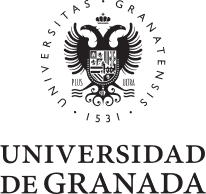Unravelling seed dispersal through fragmented landscapes: Frugivore species operate unevenly as mobile links
Gonzalez-Varo, Juan P.; Carvalho, Carolina S.; Arroyo, Juan M.; Jordano, Pedro
Publicación: MOLECULAR ECOLOGY
2017
VL / 26 - BP / 4309 - EP / 4321
abstract
Seed dispersal constitutes a pivotal process in an increasingly fragmented world, promoting population connectivity, colonization and range shifts in plants. Unveiling how multiple frugivore species disperse seeds through fragmented landscapes, operating as mobile links, has remained elusive owing to methodological constraints for monitoring seed dispersal events. We combine for the first time DNA barcoding and DNA microsatellites to identify, respectively, the frugivore species and the source trees of animal-dispersed seeds in forest and matrix of a fragmented landscape. We found a high functional complementarity among frugivores in terms of seed deposition at different habitats (forest vs. matrix), perches (isolated trees vs. electricity pylons) and matrix sectors (close vs. far from the forest edge), cross-habitat seed fluxes, dispersal distances and canopy-cover dependency. Seed rain at the land-scape-scale, from forest to distant matrix sectors, was characterized by turnovers in the contribution of frugivores and source-tree habitats: open-habitat frugivores replaced forest-dependent frugivores, whereas matrix trees replaced forest trees. As a result of such turnovers, the magnitude of seed rain was evenly distributed between habitats and landscape sectors. We thus uncover key mechanisms behind "biodiversity-ecosystem function" relationships, in this case, the relationship between frugivore diversity and landscape-scale seed dispersal. Our results reveal the importance of open-habitat frugivores, isolated fruiting trees and anthropogenic perching sites (infrastructures) in generating seed dispersal events far from the remnant forest, highlighting their potential to drive regeneration dynamics through the matrix. This study helps to broaden the "mobile-link" concept in seed dispersal studies by providing a comprehensive and integrative view of the way in which multiple frugivore species disseminate seeds through real-world landscapes.
MENTIONS DATA
Plant & Animal Science
-
0 Twitter
-
0 Wikipedia
-
0 News
-
129 Policy
Publicaciones similares en Plant & Animal Science





